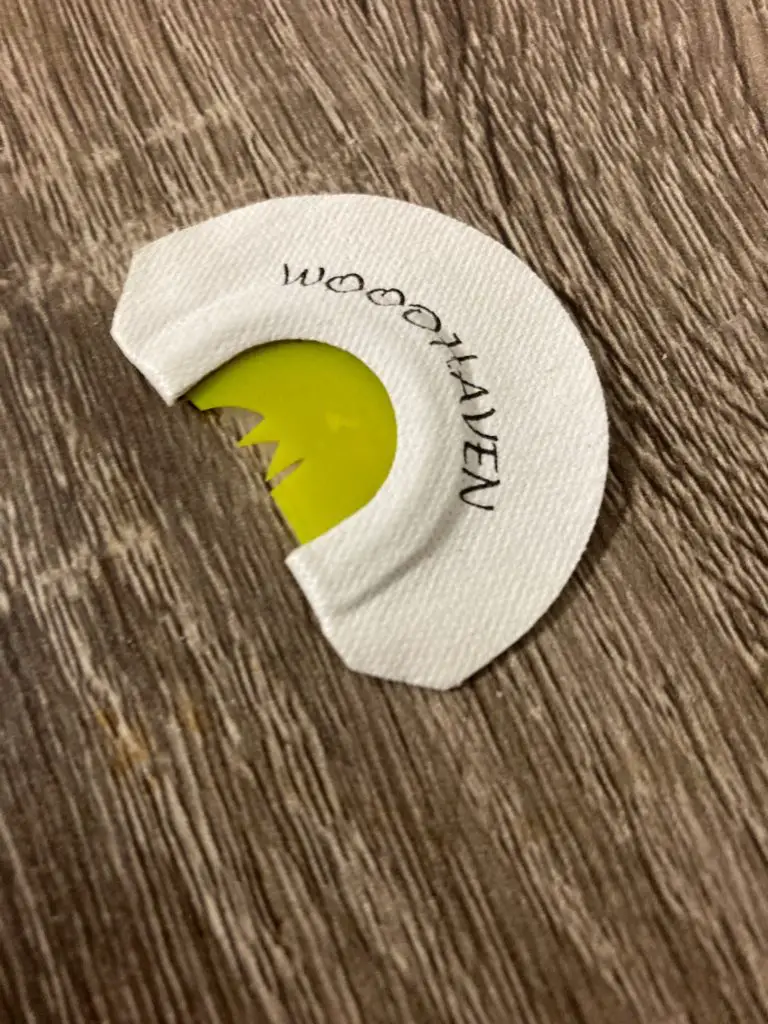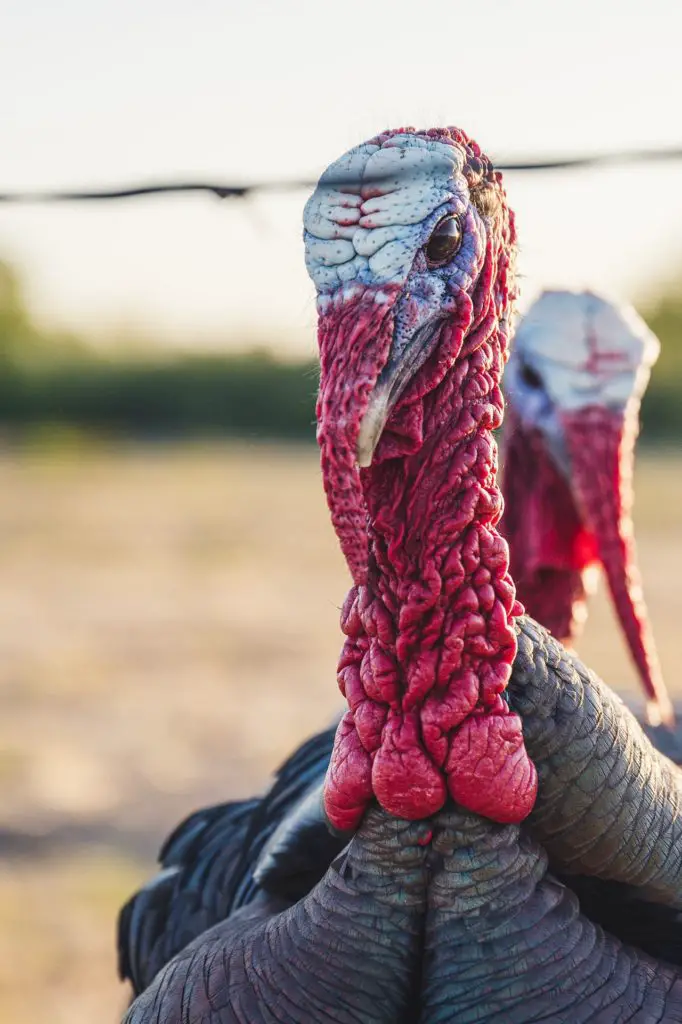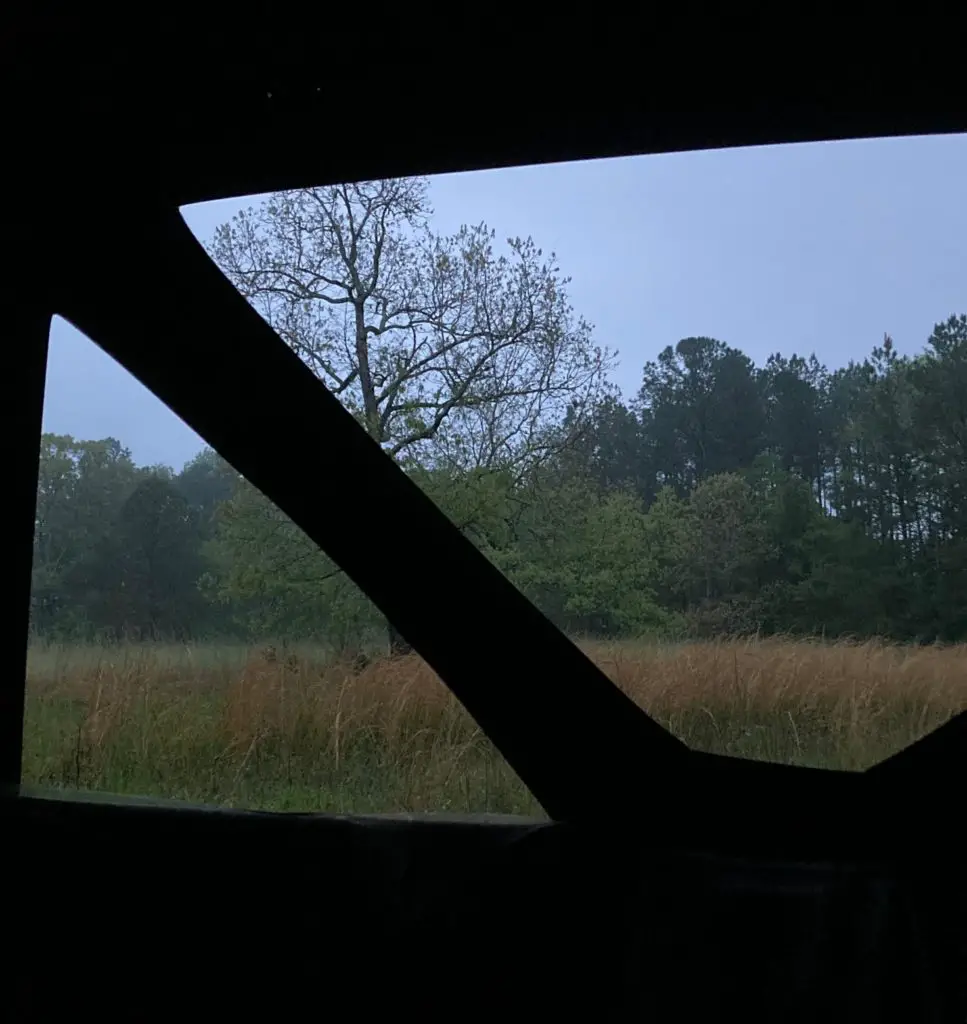
If you’re just getting started turkey hunting, you are likely wondering what the difference is in all the calls on the market today. There are turkey mouth calls, pot calls, box calls, push-pin calls, trumpet calls, and gobbler calls. Why should you use a mouth call?
Maybe you’ve been hunting for a while, but you’ve heard that mouth calls are hard to use. You may or may not be seeing success with your friction calls. Why change it up?
Each type of call offers different pros and cons. Let’s look at the advantages that a mouth call offers over some of the other calls.
1) Turkey mouth calls are small and lightweight.
Is your back hurting from wearing your turkey vest all around the woods? Enter the mouth call.
Turkey mouth calls are small and lightweight. You can fit five of them into your front pocket with no problem. You don’t even need a vest.
If you love a run and gun style of turkey hunting, you can grab your gun, shells, a couple of mouth calls, and hit the woods. It feels primal hunting turkeys with such little gear. Some might call it liberating.
2) Turkey mouth calls are weatherproof.
When the weather takes a turn for the worst, I cringe thinking about putting my beautiful box and pot calls out in the elements.
Yes, you can put your box call in a bread bag. You can hunt from a blind. You can carefully dry your pot call after the hunt and hope it’s not damaged. But why?
You can use a mouth call with no risk at all. In fact, a turkey mouth call must be wet to use it. It’s perfect for those rainy day hunts.
The next time you head out on a dreary day, just grab your mouth calls. One less thing to worry about.
3) They take little movement to run.
Turkeys are some of the wariest game animals in the woods. Any little sound or movement can throw them off.
That includes the movement required to run a box or pot call. With a turkey mouth call, you don’t have to move to call. When a gobbler gets within sight, you can sound off without worrying about him spotting your movements.
This is also useful when you are ready to take your shot. Because you don’t need your hands to call, you can raise and aim your shotgun or bow while calling with your mouth call. This is perfect for when you need to get that tom to stop and raise his head up for the perfect shot.
4) Turkey mouth calls are versatile.
You can make almost any call with a turkey mouth call. This includes gobbles, kee-kees, and cackles.
Certain reeds and cuts are better for some calls than others. However, you can make almost any turkey sound with a mouth call. Yelps, cuts, clucks, and purrs are no problem with a little practice.
Listen to Jase with Jase Outdoors gobbling with a mouth call. Try doing that with a pot call.
5) They are very inexpensive compared to other calls.
High-quality pot calls will run you 50 dollars plus. A beautiful box call will cost you 100 dollars plus. A good mouth call? No, not priceless…usually, between 10 to 15 dollars apiece.
Think about that. You can fit five different turkey mouth calls in your pocket for the price of one pot call. Heck, buy four and have some money left over for a biscuit on the way home.
One thing to consider about mouth calls is that you usually can not return them once you have opened them for obvious reasons. They will not have resale value like some friction calls out there either. So make sure you feel good about your purchase before busting it open.
6) Turkey mouth calls are not as hard to learn as you might think.
Many people delay using a turkey mouth call because they are intimidated about learning them. While it can be a bit difficult if you have an extremely responsive gag reflex, almost anyone can learn to produce basic turkey sounds after a little while.
For most hunters, a simple double-reed mouth call will be the easiest to learn on. Buy several different brands in different sizes to figure out which size fits your palate best. Remember that you can trim the tape if they are a little too big.
Start by just putting it in your mouth and getting used to the feel of it being in there. Move it from one cheek to the other; backward and forward on your tongue.
After that, you will then need to learn where to position the call in your mouth. The reed side of the call should face the front of your mouth. You should feel a bump near where the reeds and tape meet. This goes down.
Now press the call to the roof of your mouth with your tongue. Try blowing some air across the top of your tongue. If you get any kind of squeal or whistle, pat yourself on the back. You’re getting close.
Once you start consistently producing a sound like this, try adding “keywords” to make an actual turkey noise. For example, say “yelp” or “chuck” to yelp.
The video below goes into great detail on learning to use a turkey mouth call. Watch it a few times and you will have a good idea of what you are trying to do.
Conclusion
While I love my pot and box calls, it is hard to argue with the advantages mouth calls can offer you.
My favorite brand of mouth calls is Woodhaven Custom Calls. Woodhaven’s calls fit my mouth very well, they hold up through a season of calling for me with proper care, and they produce a realistic turkey sound.
Other top turkey mouth call brands include Tom Teasers, Gooserbat, and Hooks. Try a few to figure out which works best for you.
Once you’ve learned to play a mouth call that you like, you’ll love the advantages it offers you in the turkey woods.
If you enjoyed this article, you may like my article on box calls and my article on slate calls.


